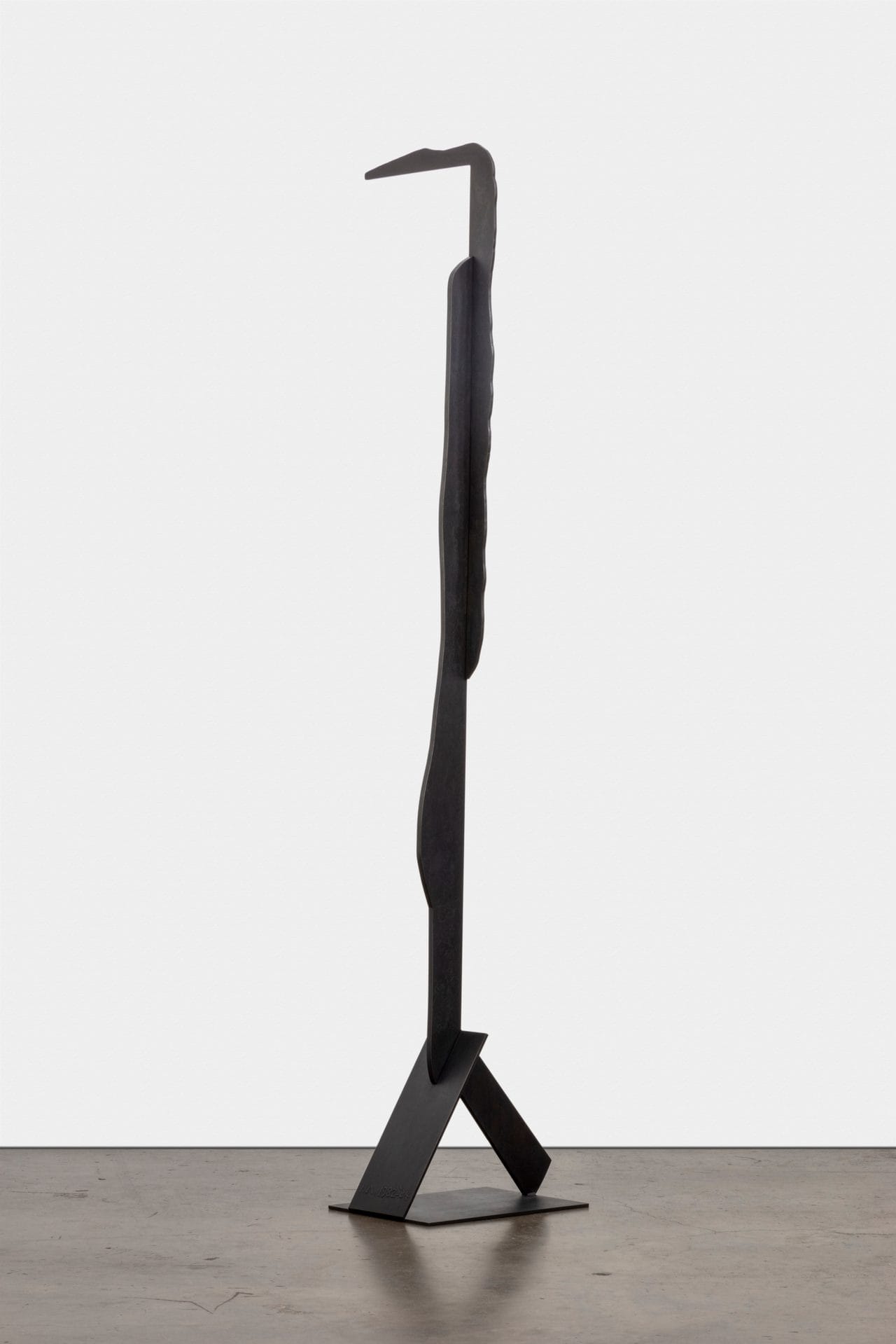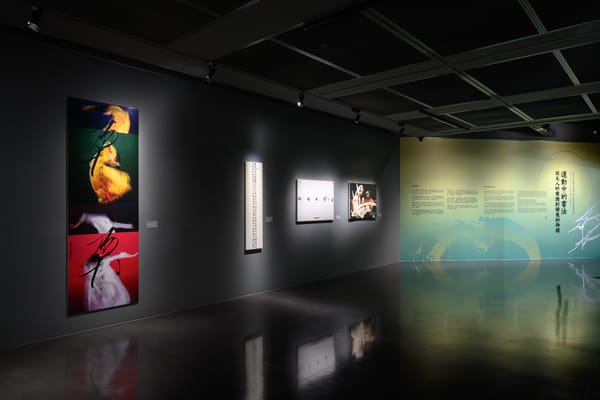Shows
Isamu Noguchi’s “A Feeling”

Isamu Noguchi
A Feeling
White Cube
Hong Kong
Sep 12–Oct 18, 2025
“A Feeling,” the first solo exhibition in Hong Kong of works by Isamu Noguchi (1904–1988), drew inspiration from the seminal encounter between the Japanese American artist and renowned Chinese ink master Qi Baishi (1864–1957). The show juxtaposed three of Noguchi’s early Peking Brush Drawings, on loan from the Isamu Noguchi Foundation and Garden Museum in New York, with four flower-and-bird paintings by Qi Baishi from the collection of the Sun Museum in Hong Kong. Also on view were eight bronze plate sculptures from the ’80s, the last decade of Noguchi’s life, as well as two nondated Akari lamps. While this was not the first exhibition to pair the two acclaimed artists, it uniquely attempted to explore the connection between Noguchi’s early artistic influences and his minimalist three-dimensional works developed over a span of 50 years.

The three Peking Brush Drawings on view were all created in 1930, the year Noguchi was introduced to Qi in Peking (now Beijing) on his journey back to Japan. After the encounter, Noguchi, aged 26 at the time, studied under the Chinese master for six months. The drawings in the exhibition depict abstracted human figures with rough outlines, overlaid by thicker calligraphic strokes that suggest the flow of the human body. The brushwork resembles a wire armature: central strokes articulate the head and shoulders, while slanted gestures convey movement at joints and limbs. These techniques seem to echo those seen in Qi’s flower-and-bird paintings, one of which captures wisteria branches using expressive xieyi (freehand) brushwork, encapsulating the essence rather than the details of the subject.


ISAMU NOGUCHI, Giacometti’s Shadow, 1982/84/2022, bronze plate, 197.5 x 47 x 43.2 cm. Photo by JW Pictures. Copyright the Noguchi Museum / ARS and White Cube.
Although Noguchi never developed his practice of ink painting to its full potential, his brief immersion in East Asian pictorial traditions, which prioritize linear quality over spatial representation, impacted his sculptures. In Giacometti’s Shadow (1982/84/2022), he paid homage to Swiss sculptor Alberto Giacometti (1901–1966), another prominent figure in 20th-century art, known for his elongated human figures. In contrast to Giacometti’s rugged forms and expressive markmaking, Noguchi reinterprets figure as mere shadow: clean, precise forms that retain only the element of slenderness of the Swiss modernist’s creations. When observed from specific angles, the steel plates converge into thin, condensed straight lines, conceptually aligning with the central strokes that anchor East Asian paintings. As viewers moved within the gallery space, the forms re-expanded, revealing intuitive tremors along their edges. While Noguchi’s experimentation was bold, distilling the richness of sculpture into minimal abstraction, his expression was highly contained, controlled, and rational.
Zazen (1982/84/2022), another work from the ’80s, manifests Noguchi’s interest in Zen Buddhism in his later years. Its title literally meaning “seated meditation,” the sculpture comprises an assemblage of steel plates: a vertical panel delineates a meditator’s torso, serene and undisturbed; a horizontal component indicates legs arranged in the lotus position, its curved contours implying bent knees; while an additional folded sheet extending from the “torso” suggests the form of a hand sign.


ISAMU NOGUCHI, Zazen, 1982/84/2022, bronze plate, 77.8 x 77 x 26.5 cm (left); and A Feeling, 1988/2025, bronze plate, 24.4 x 41.3 x 32.1 cm (right). Photos by Oriol Tarridas and Frankie Tyska. Copyright the Noguchi Museum / ARS and White Cube.
Placed on the ground, measuring just under 80 centimeters tall, Zazen appeared somewhat underwhelming, but its form and theme offered an essential clue for interpreting the much more abstract A Feeling (1988/2025), the namesake of the exhibition. Puzzling at first, the sophisticated abstraction exudes an almost religious quality. The bronze plates, arranged in a complex matrix, do not cry out for attention, but instead quietly embody the core Zen philosophies of “being in one’s own state of mind” (即境) and “seeing one’s true nature” (明心見性). The plates form a closed, self-sufficient loop—at once simple and intricate. Mysteriously authoritative, the work’s stillness captures Noguchi’s pure state of mind during its creation—one that focused on being, rather than desire for interpretation.
While the Akari lanterns slightly detracted from the overall theme, they contributed an atmospheric quality emphasizing “clarity” or “enlightenment,” which could be read as an extension of the theme of Zen Buddhism and East Asian aesthetics. Perhaps they stand as beacons that guided Noguchi through his journeys, which involved numerous international voyages and encounters. Taking in his eclectic oeuvre, one appreciated how he navigated diverse cultural contexts and brought the concepts of ink painting into three-dimensional space. Ultimately, the exhibition allowed viewers to perceive how Noguchi embraced the principle of interdependence in Zen philosophy in his lifelong search for cultural belonging.
Arphy Li is an editorial assistant at ArtAsiaPacific.







